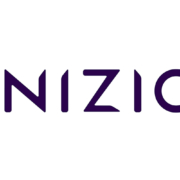Getting treatments to patients living with a rare disease requires precision
Getting treatments to patients living with a rare disease requires precision
By Pete Stark
Without question, there has been significant progress in pinpointing treatments and accelerating rare disease diagnosis, largely due to the precision of data-driven commercial strategies and the speed of digital clinical trials.
Each rare disease impacts typically a very small portion of the U.S. patient population, however collectively – as per the National Institutes of Health (NIH) – the impact is felt across approximately 25 to 30 million Americans overall.1 Worldwide estimates indicate that up to 300 million people are living with a rare disease.2 Diagnosis remains slow, and patients reap the consequences. With between 6,000 to 8,000 rare diseases, healthcare professionals (HCPs) are challenged to spot the symptoms within relatively small patient populations (five or fewer in 10,000 people). The right diagnosis may take years or, may never be uncovered.
Biopharma companies trying to deliver effective treatments for rare diseases are searching for the proverbial “needle in the haystack”. The good news is that indications show there is a rise of specialty medicines and complex therapies to treat rare diseases. Orphan drugs received 20 of the 37 U.S. FDA novel drug approvals in 2022. That’s 54 percent of approvals, an increase from 2021, and a continuation of the upward trend that started in 2010. This trend will continue in 2023, marking increased dedication among biopharmas to improve outcomes for patients with rare diseases.3
In the commercial phase, medical science liaisons (MSLs) have to identify and engage the right experts to shape their medical strategy. Often, the odds stacked against them, biopharma companies of all sizes need to unlock the clinical and commercial value of their vital work swiftly. Here are some strategies for transforming go-to-market approaches of the past to ensure delivery of new treatments to patients.
Data fuels HCP engagement for the right patients
Disconnected data sets and access limitations often cause biopharmas to struggle to fill data gaps and answer questions to understand rare disease patients’ path to diagnosis — and help to speed critical treatment. In rare disease, finding patients earlier in their journey is critical to ensure they get on therapy as soon as possible to improve their outcomes. Often, patients needing complex therapies go back and forth between specialists throughout identification, diagnosis, management, treatment, and monitoring.
To overcome these issues and prepare for launch, emerging biopharma and biotech companies are turning to more comprehensive, accurate, and actionable data to extract insights quickly and inform high-impact commercial initiatives. These data sets can include customer reference data to help understand healthcare provider affiliation and health systems, patient claims data to identify and understand patient journeys, as well as key opinion leaders (KOL) data to gain insight on each KOL’s scientific expertise.
Once biopharma companies have an authorized product, the race is on to identify and build relationships with key people whose insights will determine medical strategy. Finding the right people focused on rare diseases is not straightforward and can require resource-constrained teams to prioritize just a handful of experts.
High-value engagement requires meticulous preparation. However, MSLs are under pressure to quickly identify and reach out to experts, digital opinion leaders, and community leaders – and well ahead of launch. To be effective in their outreach, they require one point of access to relevant, up-to-date information on key people’s clinical and academic interests. Given the volume and velocity of clinical research data now exchanged and debated on social media, medical affairs teams that rely on a manual approach could easily lose track of the latest developments. Instead, they need compliant access to social media feeds, and other published resources, so they are fully prepared before they speak to an expert.
Mapping patient pathways to treatment
After launch, some companies get a head start on market access and prioritize field activity by HCP/KOL types, primary centers, and specialty. One biotech focused on rare and serious diseases was able to hit the ground running in countries where launches were live because its management team had access to dashboards based on clean, real-time customer reference data on the full ecosystem surrounding its drug. Through early visibility of market potential, it could even hire key roles in markets yet to launch.
With few customers for any given product, companies need to effectively marshal their limited resource capacity. This makes it critical for the field force to appreciate the value of new technology and start using it. Data can pinpoint the path forward, even when patient journeys are complex and varied. In the U.S., end-to-end patient data is increasingly used to map the most likely patient pathways from diagnosis to treatment.
For example, ANI Pharmaceuticals launched its first patented, branded rare disease therapeutic in January 2022, just 75 days after receiving FDA approval on its supplemental new drug application. ANI used advanced customer segmentation and technology to build specialized field teams in months, empowering them with information on different patient segments, therapeutic areas, and HCP customers. Field teams succeed because they prioritize engagement based on which doctors have the most appropriate patient visits and what they tend to prescribe.
Improving HCP awareness of a rare disease is also key to reducing diagnosis time. For this, HCPs need seamless access to information to make an early diagnosis, which could be education about symptoms they may be unaware of and at risk of ignoring.
At one company, field teams have shared insights into the patient pathway (including surveys on the patient experience) and other real-world evidence with HCPs. By combining CRM data like field team customer meetings with external data sources like HCP demographics, and online activity, teams can develop impactful relationships with the most relevant doctors in the health ecosystem. The company now delivers innovative treatments to patients faster because of its established connections with HCPs.
End-to-end patient data is key for mapping the most likely rare disease patient pathways from diagnosis to treatment. Biopharmas are moving to a modern and patient-first approach to data in order to find these pathways.
Having unlimited data access and a streamlined delivery system equips biopharmas with insights for a better understanding of HCP activity, higher patient matching accuracy, and ultimately, better patient outcomes.
New models for specialized challenges
The challenges posed by rare diseases require a different approach across the end-to-end process of bringing a treatment to market. Technology and accurate data have to work together at every stage. Clinical, commercial, and market access teams must be able to share insights and collaborate sooner to accelerate the launch process.
With no margin for error, companies of all sizes focused on this area need an early view of market viability to commercialize new treatments at scale.
Faced with frequent misdiagnoses and a lack of awareness, patients with rare diseases need better access to resources and treatments. Despite barriers, leading companies are getting so much closer to discovering and delivering for people affected by rare diseases. For patients and HCPs alike, an accelerated pathway to rare disease treatment cannot come soon enough.
References
- National Institutes of Health (NIH), Rare Diseases, February 2023.
- Joszt, L. (2019). “Not So Rare: 300 Million People Worldwide Affected by Rare Diseases”. AJMC.
- 2022 FDA Approvals, January 2023.
Pete Stark is executive VP, commercial strategy, Veeva Systems.










